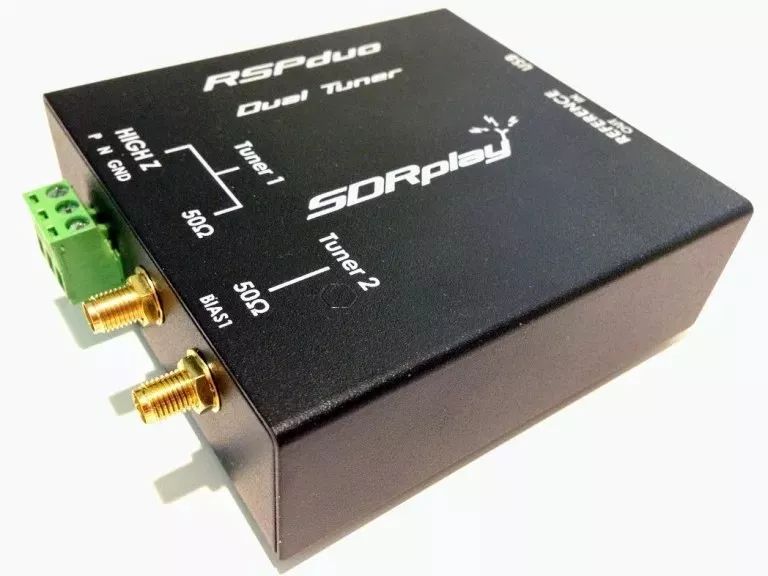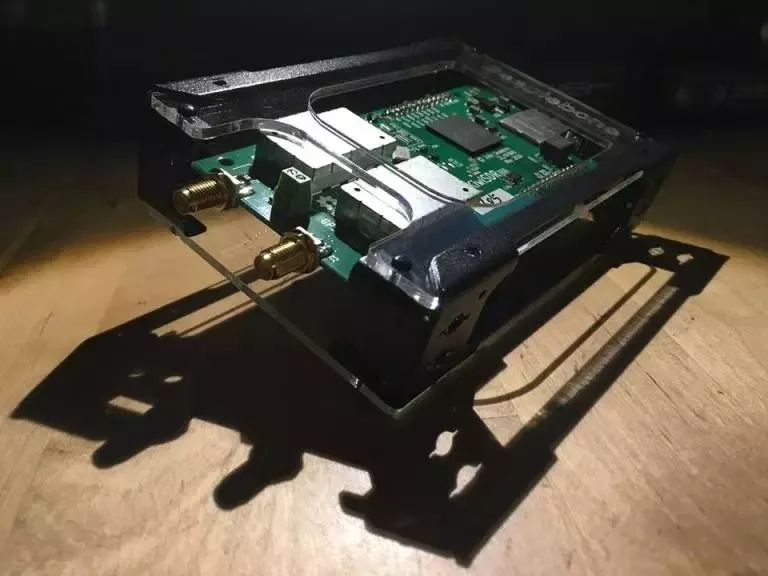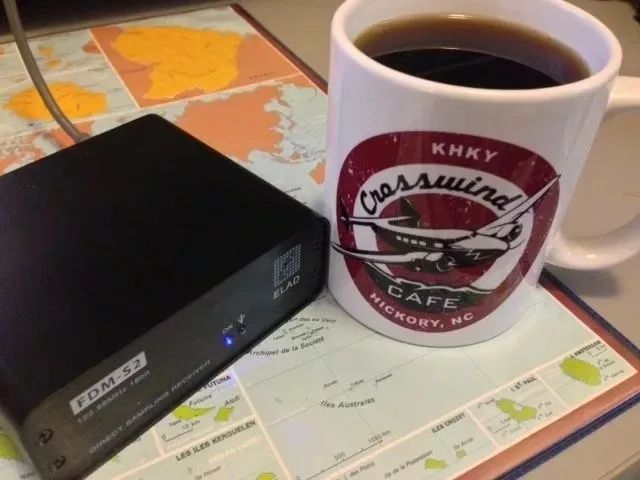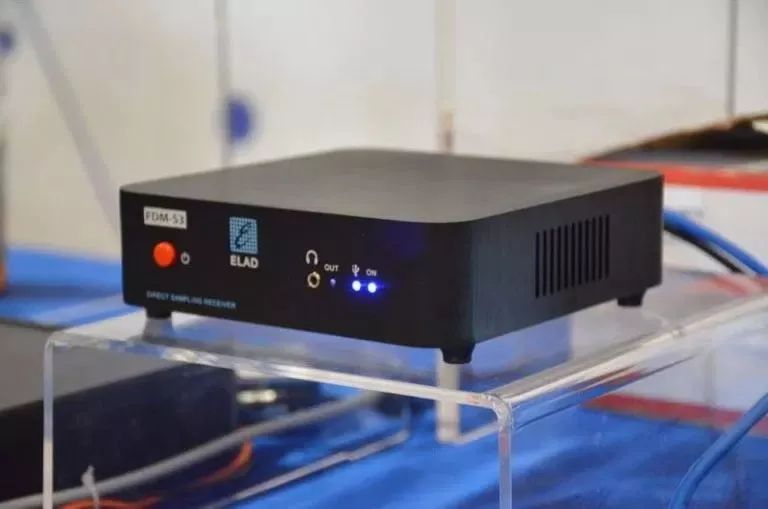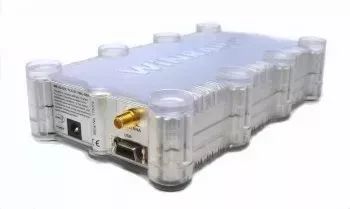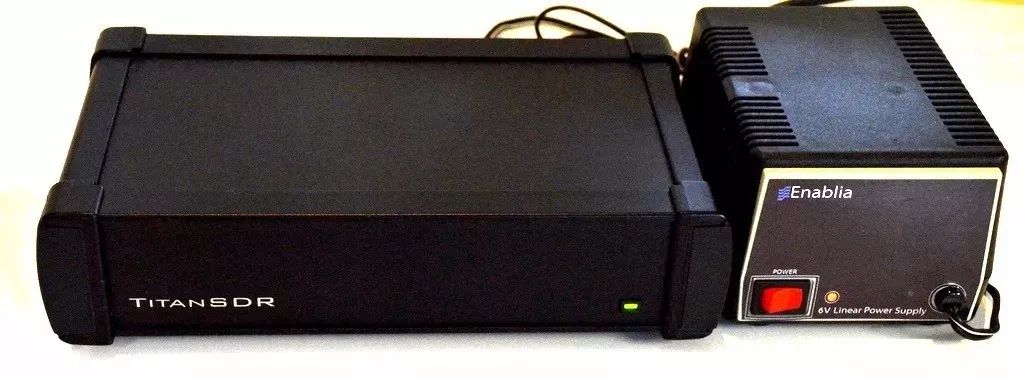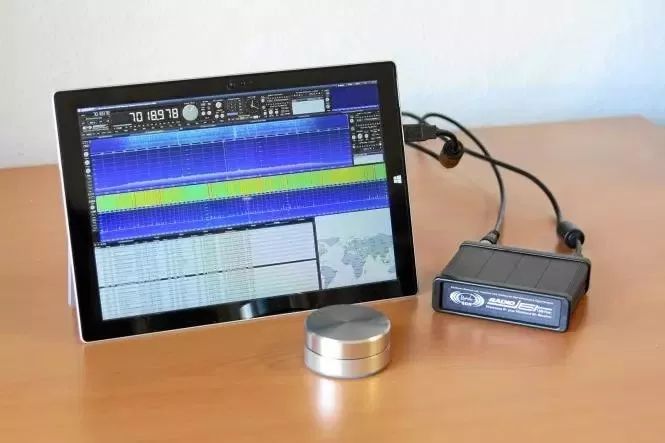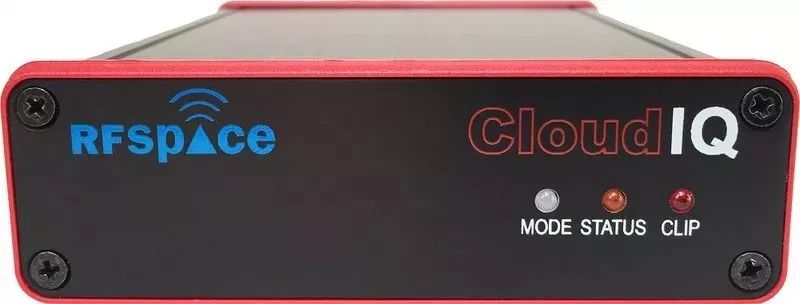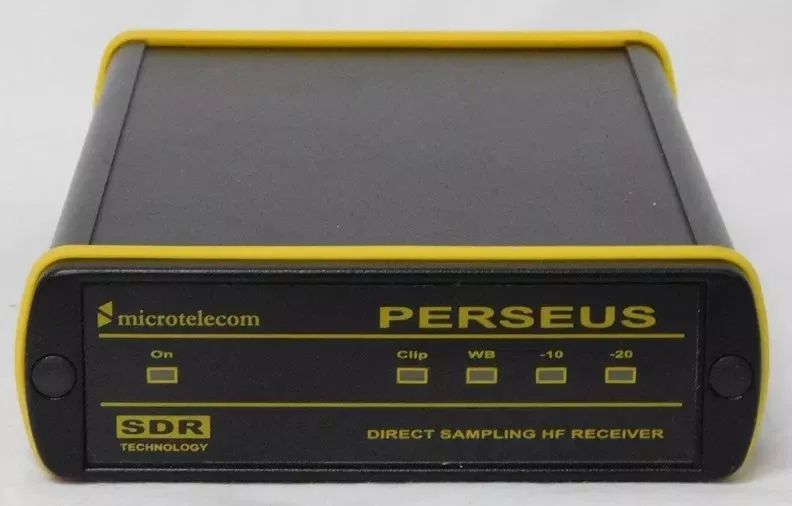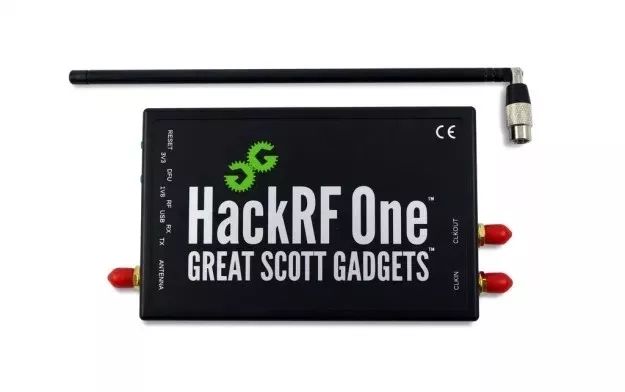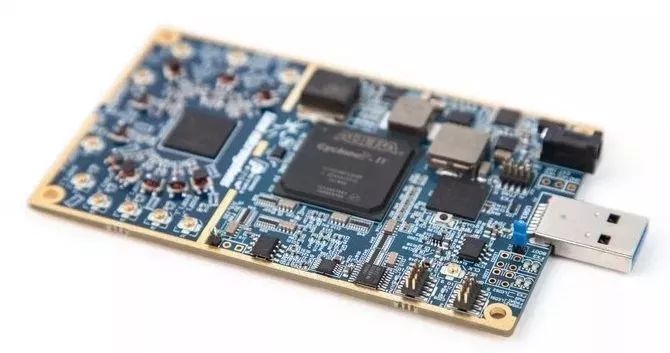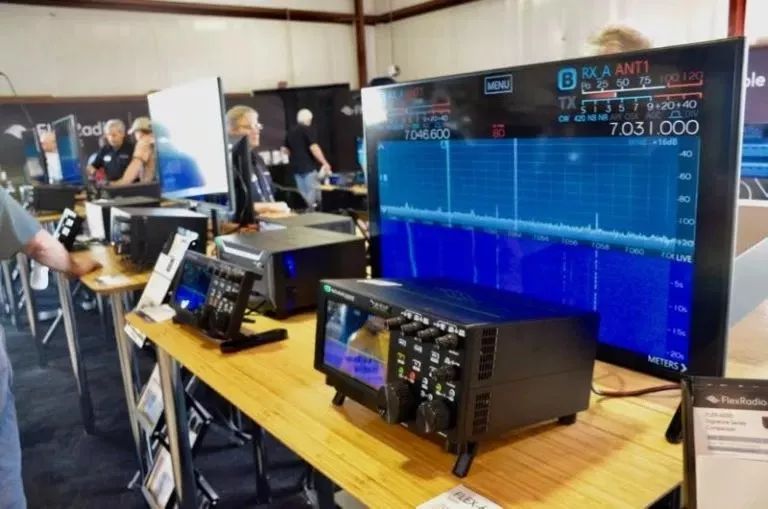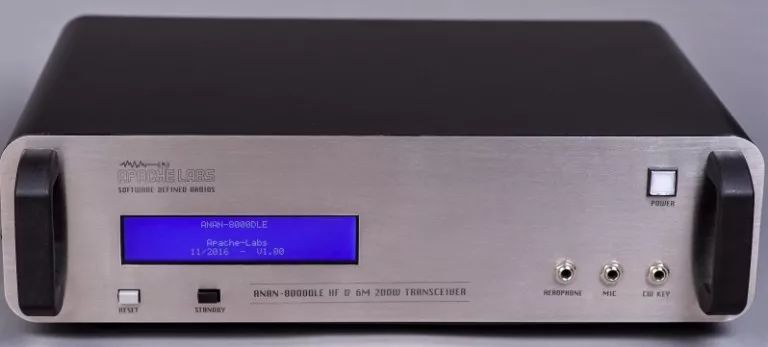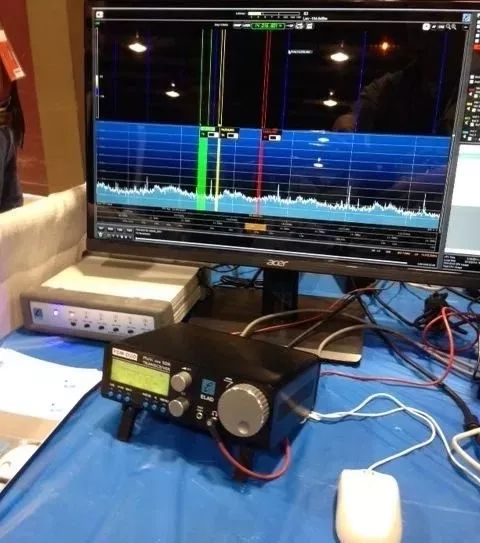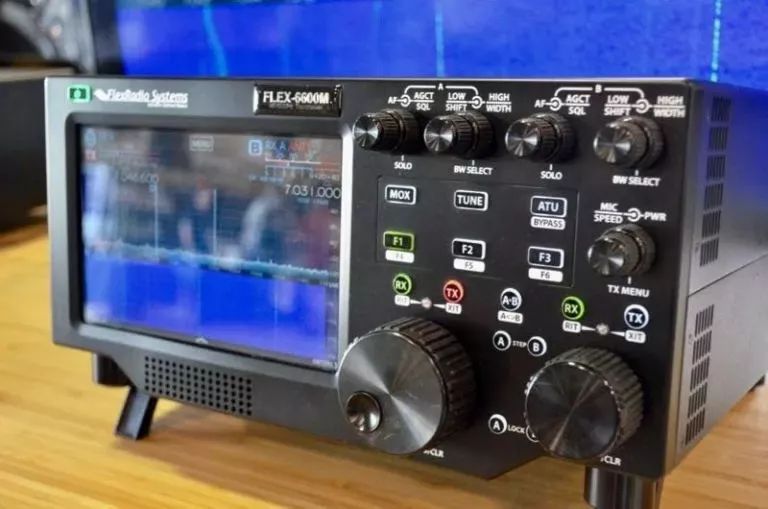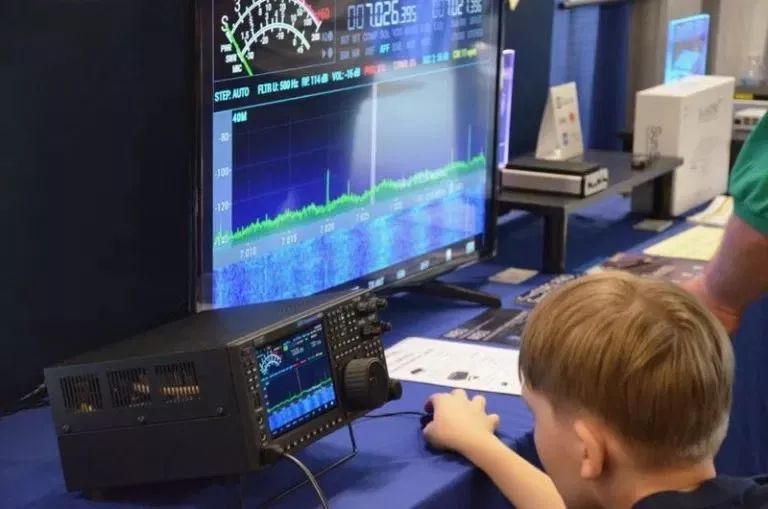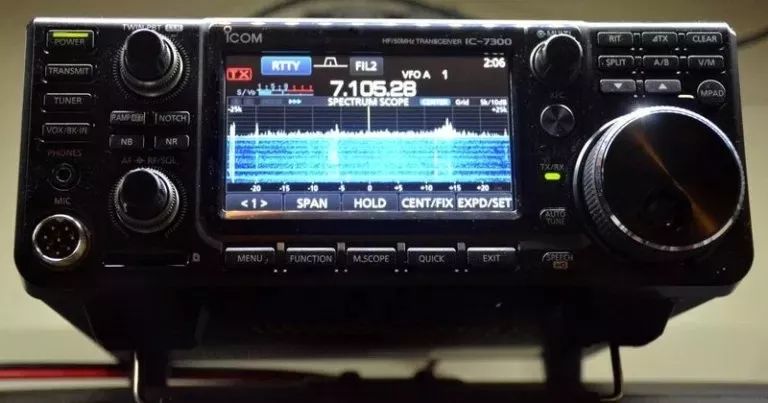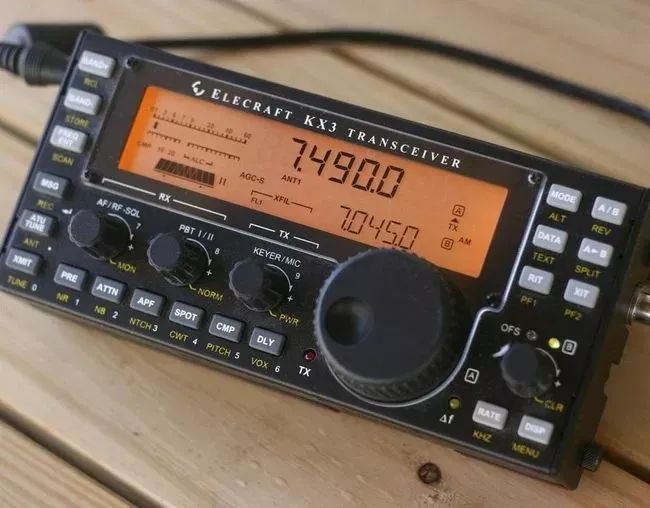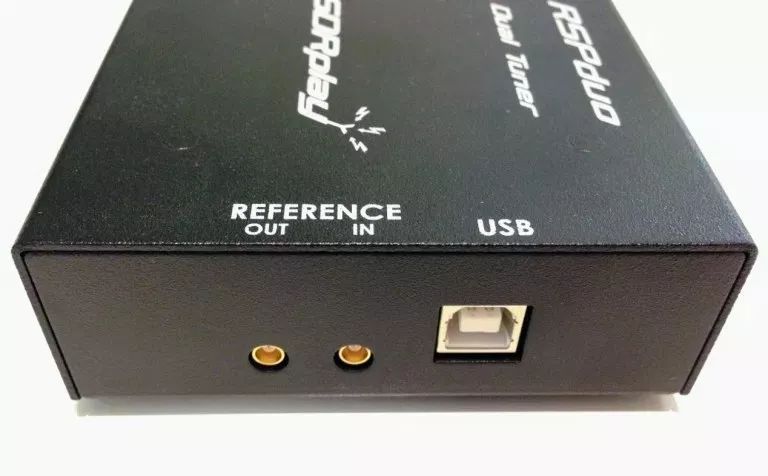
Amateur Radio
Interesting and Fun Ham Community

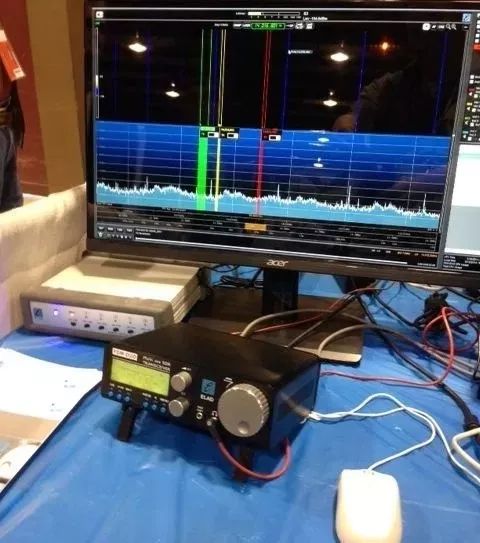
This article was published in November 2018
The Spectrum Monitor Magazine
Author: Thomas
Translated by: BG5WKP Zhu Yi
SDR Introduction Part 1: Introduction to SDR and SDR Applications
First, ask yourself what the goal of SDR is.Do you want to monitor ham radio traffic? How about aviation communications? Tracking underground stations? Listening to broadcasts from various broadcasting companies? Pursuing radio astronomy? Is your dream to set up a remote receiver?
This introduction focuses on the basic components of SDR systems.
[Ham Topic] What is SDR? | What’s Fun About Software Defined Radio? (Essentials)
[Ham Classroom] How to Build an SDR Station? How to Play? | Computer + Program, both are essential!
In Part Two, we explore affordable SDRs: those priced under $200.
[Ham Classroom] Buying Guide | Overview of Mainstream SDR Receiver Products Abroad, Price Range: $9~$200
In this third part, we will introduce more expensive models, including some transceivers based on embedded SDR. Join Uncle BG5WKP to take a look!
SDR Introduction Part 3: From High-End SDR Receivers to SDR Transceivers
Welcome back to the world of SDR
In September, we began introducing a three-part series on Software Defined Radio (SDR) introduction. The first part (September) focused on the naming and components of SDR systems; the second part (October) introduced some affordable SDR radios that allow you to enter the SDR world for under $200. This month, in the concluding third part, we will delve into SDR equipment and explore high-end SDRs and amateur radio transceivers with embedded SDR.
Investing in SDR hardware
As we mentioned in the introduction to Part 2, entering the SDR world is quite affordable. For $200 or less, you can explore the radio spectrum with SDR devices that have truly excellent performance characteristics.
So why pay more for high-end SDR equipment?
Let’s consider. If you happen to live in an RF-dense environment, such as a busy city, or near a powerful broadcasting company, or if you are a performance-seeking DXer, investing more cash in SDR hardware is what you desire.
When you pay more for SDR, the extra cost is usually for hardware rather than software. In fact, my favorite SDR (software) applications are completely free and pair well with many benchmark SDRs. But good hardware is crucial for performance. The SDR receivers discussed below typically feature better filters, preselectors, better shielding, and architectures focused on HF performance. They also tend to offer more powerful front ends, lower noise floors, and better dynamic ranges. Of course, all this leads to better overall performance. Some of these SDRs also offer unique professional features like built-in web servers.
The SDR devices introduced below are carefully selected, in my opinion, they represent a balance between price and performance. And this is by no means a comprehensive list; it’s just a selection you can find in the SDR market.
So, without further ado, let’s begin discussing the “black box” SDRs, then move on to SDR transceivers and transceivers with embedded SDR.
SDRplay RSPduo
In May of this year (2018), the UK-based SDR designer and manufacturer SDRplay released their latest receiver: SDRplay RSPduo.
This little black box is different from its competitors precisely as its name suggests: dual-tuner SDR. In other words, it combines two independent SDRs into one.
As a price leader in the SDR world, SDRplay retails the RSPduo at $279.95. And I must add, this is a real bargain for a feature-rich 14-bit high-performance device.
The RSPduo’s tuners can operate independently between 1kHz and 2GHz, with a working bandwidth of up to 10MHz. You can also set the RSPduo to allow both tuners to operate simultaneously between 1kHz and 2GHz, with each tuner having a bandwidth of up to 2MHz. The RSPduo boasts high stability and an external clock feature, making this SDR an affordable choice for industrial, scientific, and educational applications. It comes with a high-quality steel enclosure.
The development team at SDRplay has begun researching new features like true diversity reception, which will be included as a free upgrade to their popular SDRuno proprietary application.
It’s important to clarify that there are currently no other SDRs on the market under $300 that have true dual-tuner functionality. Therefore, in my opinion, the RSPduo is worth its price and is a budget-friendly upgrade dual-receiver SDR, so if this is something you want to add to your radio studio, go ahead! Bite the bullet and buy an RSPduo. You won’t regret it.
KiwiSDR
Photo: Mark Fahey
Similar to the RSPduo, the KiwiSDR has unique features that make it stand out among other receivers mentioned here: it is designed to be fully controlled via a web browser-based SDR application. You can use the KiwiSDR locally and share it with the world via the KiwiSDR network. You can configure the KiwiSDR to allow up to eight simultaneous guest users, provided you have the necessary amount of Internet connection available.
The KiwiSDR comes as a simple modular kit that can be assembled without special tools: the SDR is a custom circuit board (called a “cape”) that connects to a BeagleBone Green or BeagleBone Black mini-computer.
The KiwiSDR has two versions: SDR cape (single unit) and a more complete version that includes the SDR cape, BeagleBone computer, enclosure, and GPS antenna. Both versions include all SDR software loaded on a micro-SD card.
While the KiwiSDR may sound like an experimenter’s receiver due to its need for a certain level of assembly and configuration, at least more than the other units I’m reviewing here, the assembly, installation, and broadcasting are actually quite simple. In fact, the only challenge you might face is setting up the router for global access to your KiwiSDR. It does require a static IP address or (more commonly) an IP address forwarding service. Please check the support documentation in advance to ensure your Internet connection is working properly.
The KiwiSDR covers 10 kHz to 30 MHz, so it is not a broadband receiver like the SDRduo. Like the subsequent SDRs, it focuses its performance on HF and lower frequency bands.
I find it incredible that for just $299, you can purchase a complete KiwiSDR kit that includes everything you need to stream SDR online. Therefore, I believe the KiwiSDR has become the dominant network SDR platform on the market today. Perhaps this remarkable fact overshadows the reality that the KiwiSDR is also an excellent performer with outstanding dynamic range and superb sensitivity and selectivity.
As my friend and broadcast listener Mark Fahey, an early owner of the KiwiSDR, quickly pointed out, the unique aspect of the KiwiSDR is that it cannot connect to a PC or other computers to operate. It is standalone: just connect the antenna, DC power, and network cable, and you’re ready to go. All the “work” is powered by the BeagleBone CPU.
What are the downsides of this device?
While the web-based SDR application is feature-rich, it does lack spectrum recording and some other advanced controls. This is due to the relatively modest processing power of the onboard CPU. That said, the KiwiSDR application impressively includes features/functions through extensive expansions.
Additionally, when updates are rolled out for the KiwiSDR application, they will take effect globally. For example, recording and amazing TDoA (Time Difference of Arrival) features were just recently added.
Oh, and one more thing as we move forward: the KiwiSDR is the only SDR I know of that is controlled by a web-based SDR application specifically for online visitors and local users/owners. There is no separate downloadable application. Thus, whether you are using your local KiwiSDR or an online SDR, the user experience is exactly the same. It is seamless, user-friendly… just as it should be.
Want to try the KiwiSDR before you buy? Easy! You can browse online and select from any of the 200 KiwiSDRs at SDR.hu.
ELAD FDM-S2 / FDM-S3
The Italian SDR manufacturer ELAD has pushed the performance of SDRs in the $500 to $1000 market for years and has built a solid reputation.
I have owned their Elad FDM-S2 for four years now. The FDM-S2 is impressive and stands out among competitors, truly reflecting excellent engineering and hardware.
The frequency coverage of the FDM-S2 is 9 kHz-52 MHz, 74-108 MHz, and 135-160 MHz. I should note that in addition to being a great HF and medium-wave player, the FDM-S2 is the choice receiver for FM DXers; the FM performance on this equipment is outstanding.
ELAD uses its proprietary support for all SDR applications, of course, these applications are designed to fully utilize the SDR’s available performance. The ELAD application is feature-rich and even includes built-in DRM decoding. Interestingly, it allows the FDM-S2 to operate as two completely independent tuners in “dual DDC mode,” where each tuner has a working bandwidth of 384 kHz, each of which can be placed within one of the FDM-S2’s input ranges.
In fact, I enjoy pairing my FDM-S2 with the excellent and free SDR Console SDR application; I prefer its user interface and the recording capabilities of the ELAD application.
If you live in an RF-dense area, you might consider using one of ELAD’s external preselector filter systems to prevent the FDM-S2 from overloading in the presence of very strong signals.
The FDM-S2 currently retails for $529.
Photo of the new ELAD FDM-S3 at Hamvention 2018
Note that ELAD will soon release the latest member of its product line: the FDM-S3. I know little about the FDM-S3, but I know ELAD promises that the new product will have breakthrough performance and dynamic range, creating a new price benchmark for $1000. We know that the FDM-S3 has an impressive processing bandwidth of 24.576 MHz, enough to encompass the entire FM broadcast band!
I’m not sure if FM DXers will be able to leverage 24 MHz bandwidth for spectrum recording, as I suspect it can push 24GB of data per minute. The FDM-S3 may hold up well, but I’m not sure typical computer hardware can handle such data transfer…
However: ELAD will be sending me a more affordable FDM-S3 for evaluation in the coming months, so stay tuned for more information on this DXer dream equipment!
By the way, the current price of the FDM-S3 is €949.90.
WinRadio Excalibur
I first ventured into the benchmark SDR world with the Australian-made WinRadio WR-G31DDC Excalibur. Although this SDR has been on the market for most of the past decade, it still outperforms many competitors. The Excalibur’s frequency range is 9 kHz to 49.995 MHz, offering absolutely outstanding performance across the entire spectrum.
Although it can only be fully controlled by WinRadio’s proprietary SDR application (at least, I know of no other compatible applications), it is the most popular SDR in my radio studio. On the positive side, the WinRadio application is one of my favorites.
The application is very compact, with a file size of only 9MB. The user interface is logical, ergonomic, and responsive. In addition to the SDR console, it features some of the best recording functionalities available today.
I have logged more playback time with the Excalibur than with any other SDR I own, primarily due to its excellent overall performance, responsive application, and recording capabilities. I use the Excalibur as a benchmark for evaluating receivers and find few that can match its stable performance.
The WinRadio Excalibur is available from global dealers for around $950.
Enablia TitanSDR Pro
The Enablia Titan SDR Pro is a standout product in our SDR Primer series, retailing for over $2000. However, it is the highest-performing SDR I have tested. DXers who prefer capturing severely weak signals might be very satisfied with this equipment.
As a radio archivist, the Titan has the most powerful audio and spectrum recording capabilities I have ever used. It allows selectable spectrum recording over an extremely wide working bandwidth while running up to four completely independent SDR receivers.
The Titan comes equipped with 16 frequency preselectors, covering frequencies from 9 kHz to 32 MHz. Its front end is bulletproof, allowing it to operate in demanding RF environments.
The TitanSDR includes an excellent proprietary application. It is designed to make the Titan’s multiple virtual receivers and four independent SDR receivers as user-friendly as possible. As I mentioned in my review, the engineers at Enablia successfully achieved this goal. The only downside is that only the TitanSDR application can run the TitanSDR; no other third-party applications can use it. Additionally, during spectrum recording, the file format is proprietary, and the header information is actually stored in a separate file. This means that when you transfer a set of spectrum recordings, you must also consider the header files.
Of course, the TitanSDR also has a daunting price tag, which clearly indicates that it is a receiver designed for government and commercial use, particularly for signal intelligence. Therefore, it’s not surprising that the basic version of the TitanSDR retails for €1380, while the TitanSDR Pro is priced at €1970.
To be fair, not many readers will consider the TitanSDR Pro, but I think it’s worth mentioning because it showcases a clear case of hardware being the main focus of innovation.
Enablia’s website has little content, so if you are interested in their TitanSDR, I recommend contacting them directly for a price quote.
Other SDR Receiving Devices
The SDRs mentioned above represent only a small portion of the availability in the SDR market. There are several other notable manufacturers and SDRs worth considering, so it’s worth noting.
Bonito Radiojet 1309 Plus
Based in Germany, Bonito manufactures many SDRs, antennas, and components that are highly regarded among DXers. Bonito’s “hybrid” SDR is powerful but requires little in terms of computer resources. Their latest SDR, the Bonito RadioJet 1309 Plus, covers 0.02 MHz to 1600 MHz, with spectrum display expandable to 3.2 MHz. I have not personally evaluated the RadioJet 1309 Plus, but I did check an earlier version of the RadioJet (1102S), which lacked the additional IQ receivers of the 1309. I found it to be an impressively sensitive and selective receiver with excellent audio characteristics.
RFspace Cloud-IQ
RF Space has been manufacturing SDRs longer than many other manufacturers and offers many products, including SDR-IQ, NetSDR +, Cloud-IQ, and the upcoming CloudSDR.
In Part 2 of our primer, we mentioned the AirSpy HF +, which has impressive HF performance. Airspy also produces the Airspy R2 and Spyverter R2, a compact SDR package priced at $218, offering excellent dynamic range and outstanding frequency stability.
I also appreciate the classic Microtelecom Perseus SDR, which retails for around $700. WinRadio also offers high-end SDRs with a wider frequency range and working bandwidth than the Excalibur, so if your budget allows, consider these.
In any case, remember that if you’re spending money wisely, there’s no need to splurge on higher-end SDRs unless your needs and applications require increased performance. Before pulling the trigger on such equipment, I would simply consider the frequency range, working bandwidth, and performance characteristics of the device, and take the time to read plenty of user reviews. This increases your chances of getting the device you want.
SDR Transceivers
So far, I have only mentioned SDR receivers in this introductory manual, but there are also some decent “black box” SDR transceivers available on the market. The “black box” refers to the transceiver itself (all hardware) installed in a box, of course, with antenna, data, power, microphone, CW key, and many peripheral device ports. These SDRs almost always require a computer to operate, although recently manufacturers have started to offer optional touchscreen front panels that can bypass the need for external computer operation.
Unlike the desktop radio world, the cost of purchasing a general coverage transceiver rather than a dedicated receiver is often lower, but the cost of SDR transceivers is almost always higher than that of comparable SDR receivers.
Also note that SDR transceiver applications do not always include audio and spectrum recording functions. Additionally, their working bandwidth may be narrower than that of other SDR devices that only have receiving capabilities, although they may offer more virtual receivers and spectrum “slices”.
Finally, SDR transceiver applications tend to be proprietary; when you purchase a transceiver, you might receive the only SDR application that connects to it. Assuming that if you purchase an SDR transceiver and the company that produces it lacks R&D capability, you may encounter problems when the application is no longer updated through operating system upgrades and iterations. The lesson here is that I believe you should strive to stick with the healthiest companies and those with solid, large user bases.This increases the likelihood of future support for the application.
Low-Cost, Low-Power SDR for Experimenters
We will start with the cheapest SDR transceivers designed with experimenters in mind, which can also be used by hams as very low-power transceivers with slight modifications.
Great Scott Gadgets’ HackRF One ($299) is an excellent SDR. It has an incredible wide frequency range (1 MHz to 6 GHz) and can transmit in the range of 3 mW to 30 mW depending on the frequency. This is the power of QRP low-power hopping, yes, but if your goal is to experiment in a local environment, it is usually more than enough. HackRF is open-source and has a large user community that uses it in many applications. HackRF is one of the first SDRs to truly provide experimenters with a complete toolkit for operating in the wireless world.
LimeSDR Board
LimeSDR ($299) is another crowdfunding project that has become very popular. Like HackRF, it is a low-cost open-source SDR platform that can support nearly any type of wireless communication standard. The uniqueness of LimeSDR is its integration with Snappy Ubuntu Core, meaning users can simply install applications from the app store to add functionality. As LimeSDR states, their platform “provides students, inventors, and developers with a smart flexible device to operate wireless signals so they can learn, experiment, and develop without the limitations and costs of proprietary devices.
Again, if your primary goal is to experiment in the world of radio, then consider HackRF or LimeSDR. If you are looking for a fully functional SDR transceiver for ham radio, keep reading.
Ham Radio SDR Transceivers
Flex Radio booth at Hamvention 2018.
Undoubtedly, the dominant brand in the American amateur radio transceiver world is Flex Radio, based in Texas. From the earliest days of SDR transceivers, Flex has been in the game, producing a wide range of high-performance devices. In recent years, considering the picky DXers and competitors, their product development and production have focused on high-end transceivers. Their flagship series of SDRs offers incredible performance, but can be suitably operated through a PC since most of their processing power and hardware are handled within the radio chassis. Flex has also developed a fully wireless touchscreen Maestro console for seamless control of remotely connected Flex SDRs via local networks or even the Internet. Prices for Flex Radio SDRs range from $2000 to $7500.
Flex-6600
Gary Weiss (W4EEY), who collects Flex Radio, also pointed out:
“One of Flex’s latest models, the Flex-6600, includes 7th-order competition bandpass filters and dual ADCs. This means that with this radio, you can listen on one band while transmitting on another. This is what contest operators refer to as “one operator, two radios” operation, and if you can pull it off, it will yield a great contest score. Integrating this functionality into one box without extra controllers and interfaces is very noteworthy.”
Another two SDR transceiver manufacturers with large user bases are SunSDR from Sweden and Apache Labs from India. Both companies produce high-performance SDRs and, like Flex, set benchmarks in transceiver performance. I won’t comment in detail on either company as I haven’t had the opportunity to personally test their products, but I encourage you to search for online reviews of their products.
Desktop SDR Transceivers
The Elad FDM-DUO transceiver can be a standalone desktop or a fully functional SDR when paired with a PC.
There are many fully functional desktop SDR transceivers on the market. One of the earliest SDR manufacturers to establish a completely standalone PC-integrated desktop model was ELAD, who launched the FDM-DUO QRP transceiver. When released, the desktop SDR had very limited functionality when connected to a PC. Some of these applications are outdated and lack features like spectrum recording and multiple virtual receivers. When connected to a PC running ELAD software, the FDM-DUO allows users full control over the SDR. In fact, the experience is the same as using the FDM-S2 mentioned above, but the DUO is also a transceiver. Since the DUO was released, other SDR manufacturers have designed models with full SDR application integration.
Flex 6600M is a beautiful standalone SDR transceiver.
Recently, Flex Radio launched their Flex “M” signature series SDR transceivers. These desktop SDRs can be configured with most of the SDR receivers currently produced by Flex. Their performance showcases impressive practicality, the spectrum waterfall resolution and size are among the best I’ve seen on desktop transceivers. The front panel is large and equipped with multiple controls, the design harkens back to large contest-grade transceivers, such as the Ten-Tec OMNI VII and Orion series.
SunSDR MB1 at Hamvention 2018.
This year at Hamvention in Xenia, Ohio, I had the opportunity to check out the SunSDR MB1. Like the Flex M series, the MB1 features a comprehensive front panel and a variety of connections on the back panel. When I saw this SDR radio, I was most impressed by the thought that went into this standalone SDR transceiver; it really requires a tour as it is feature-rich. I love the front panel display, graphics, and overall ergonomics of this device. As far as I know, it will also deliver SDR benchmark performance; in fact, it starts at a high price of $7000, which I expect will not be less!
Summary of SDR Transceivers
As we pointed out in this section of the introduction, pure SDR transceivers are products suitable for hams willing to invest more financially to leverage the advanced features and performance that true SDRs can offer. Currently, the number of participants in the pure SDR transceiver market is astonishing; it is a product category ripe for expansion. With more and more manufacturers entering the game, I believe competition will drive prices into a more affordable value range.
Transceivers Based on SDR Technology
The last category we will discuss is transceivers based on SDR technology. This marks an era indicating that all high-end transceivers and receivers may be heading in this direction.
Icom IC-7300 Transceiver
The fact is that whether you are willing to accept SDR in your radio world or not, you may be surprised at what you already have: for years, radio manufacturers have built their transceivers and receivers on SDR and I/Q quadrature downsampling technology. All the transceivers launched in recent years with onboard spectrum displays, such as Icom-IC7300, Icom IC-7610, and Yaesu FTDX1200 – are all based on SDR technology.
Many other products, such as the Elecraft KX3 and KX2, look more like traditional radios, but are also based on SDR architecture. In fact, almost all major manufacturers have implemented SDR technology in their existing product lines.Manufacturers have begun to learn how to leverage SDR technology to maximize receiver performance while keeping overall prices lower than traditional radios with equivalent performance in previous days.
However, while these radios are at the core of SDR, their functionalities are often limited when connected to a PC; most can be fully controlled by a PC, and many can even output their I/Q data, but typically they do not offer the working bandwidth and advanced features of true SDR transceivers.
Conclusion
If I have sparked your curiosity about the SDR world and you haven’t added one to your radio studio yet, I encourage you to invest in an SDR receiver, at least one of the affordable devices mentioned in Part 2.
Speaking of myself, I used to be a “knobs and buttons” radio operator, and I thought I would never want to control a radio via a computer and monitor. However, when I hesitantly invested in my first SDR device, I found it eye-opening, democratizing the radio as it made all radio listeners equal, as the spectrum became visually understandable and acceptable to all. I found that if you enjoy listening, you can also see your audio, especially when editing or archiving, but as long as you adjust in the spectrum, you can clarify and enhance your overall radio experience. I quickly became enamored with it… and never looked back.
Now, I can assure you that I will never leave SDR devices behind. Visualizing our radio spectrum through the virtual window of SDR is truly inspiring.
Amateur Radio WeChat ID:ham_cn
Add Friend – Search Number:ham_cn
Or find the WeChat official account: Amateur Radio
Cooperation, ContributionsPlease add the editor’s WeChat:78329708,
Or call: 18959213416 .
